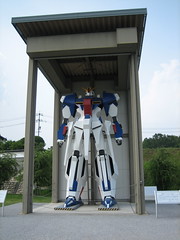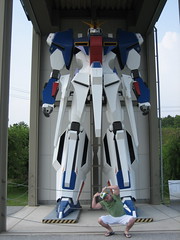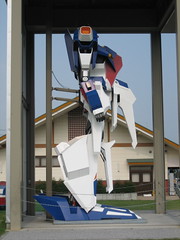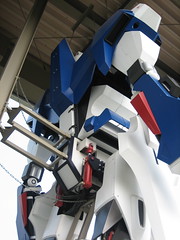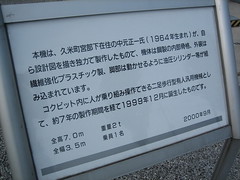The NYT today has a neat article by the very prolific Norimitsu Onishi entitled For a Hungry Audience, a Japanese Tom Clancy.
This year, three big-budget war movies based on Mr. Fukui’s stories are being released here, a sign of how much Japan itself has changed in the short time that he has risen from obscurity to pop culture prominence. Unlike Hollywood, Japan’s film industry traditionally avoided making movies with military themes, especially ones in which the military was portrayed heroically.
What is more, the Self-Defense Forces used to participate mainly in “Godzilla” movies, typically keeping public order as the lizard ran amok. But for the first time in postwar Japan, this year’s movies, with the full cooperation of the military, show the armed forces doing what they have yet to do in the real world since World War II: fight and kill.
“It can undoubtedly be attributed to the times,” Mr. Fukui said.
Mr. Fukui sat down for an interview here on Monday, looking a little out of place, underdressed in jeans and a T-shirt, in the Imperial Hotel’s lobby cafe. While demure about his success – “my life hasn’t changed that much,” Mr. Fukui said – he seemed a little weary, perhaps somehow world-weary, compared with his demeanor during an interview in April in his neighborhood in eastern Tokyo.
Back then, the first movie, “Lorelei: The Witch of the Pacific Ocean,” a World War II tale of a Japanese submarine that foils American plans to drop a third atomic bomb, on Tokyo, was already a certified hit. In June, the second movie, “Sengoku Jieitai 1549,” or “Samurai Commando Mission 1549,” was released, offering a story of Self-Defense Forces sent back in time to a Japan riven by civil war.
This month, “Bokoku no Aegis,” or “A Lost Country’s Aegis,” will open, featuring some of Japan’s biggest male stars in a story about a terrorist who infiltrates a Japanese military vessel. The terrorist in the novel is clearly identified as North Korean; in the movie, though, he could be from either North Korea or China, two countries with which Japan’s relations have recently worsened.
Adamu has previously blogged about the remake of Sengoku Jieitai, the original version of which was actually released in the US under the silly title GI Samurai. I should, however, clarify Onishi’s article. Mr. Fukui did not write the novel that Sengoku Jieitai 1549 was based on. It is a remake of a 1979 film, which was itself based on a novel by Ryo Hanmura. Mr. Fukui only helped with updating the story, presumably because of his Tom Clancy-like (or if you will, otaku-like) knowledge of today’s SDF.
Unfortunately, according to these Amazon user reviews the remake actually compares very poorly with the original, an opinion which this decently detailed review at IMDB agrees with.
Here is IMDB’s plot summary of the original film, Sengoku Jieitai (Japan’s Self Defense Forces in the warring states period).
A squadron of Japanese Self-Defense Force soldiers find themselves transported through time to their country’s warring states era, when rival samurai clans were battling to become the supreme Shogun. The squad leader, Lt. Iba, sees this as the perfect opportunity to realize his dream of becoming the ruler of Japan. To achieve this, he teams his troops up with those of Kagatori, a samurai daimyo who also aspires to become Shogun. Are either of these power-hungry warriors to be trusted?
Here you can see the trailer for the original 1979 version, courtesy of Amazon Japan. I haven’t yet had a chance to see the film, but aside from the bizzarely inappropriate music it seems very cool.
And here is the trailer for the remake. It may not have the charm of the original, but from the trailer it looks to have a level of big budget production quality that has been very, very scarce in Japanese films for a number of years. And shit, even a film about time traveling soldiers fighting Oda Nobunaga has got to be less corny than Tom Cruise as The Last Samurai.

